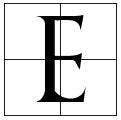7 Things You Didn’t Know About Edmond Halley
The British scientist did more than track a comet
 Edmond Halley (1656–1742) entered astronomy’s hall of fame for proving that a comet (the eponymous Halley’s Comet), followed an elliptical orbit around the Sun, returning to perihelion every seventy-six years. For thousands of years, humans believed that comets appeared in the heavens in no predictable pattern. They appeared without warning and vanished in the same manner. Most people believed that God (or the gods) sent comets as warnings to the Earth’s inhabitants. Comets were portents of doom, signs of impending disaster.
Edmond Halley (1656–1742) entered astronomy’s hall of fame for proving that a comet (the eponymous Halley’s Comet), followed an elliptical orbit around the Sun, returning to perihelion every seventy-six years. For thousands of years, humans believed that comets appeared in the heavens in no predictable pattern. They appeared without warning and vanished in the same manner. Most people believed that God (or the gods) sent comets as warnings to the Earth’s inhabitants. Comets were portents of doom, signs of impending disaster.
Halley changed all of that. By predicting a comet’s orbit (and being proven correct in 1756), Halley placed comets in the class of natural phenomena. They were not bearers of bad tidings from deities, comets were just like the rest of the heavenly bodies, following paths that could be predicted.
It was an astounding accomplishment. Halley’s name was admitted into the annals of science, and, roughly every seventy-six years, the world pauses to remember his accomplishment as his comet makes its scheduled return.
What is tragic, is that Edmond Halley was far more than a one-hit-wonder. He was one of the most active and imaginative scientists of his day. His learning was vast. He made…
